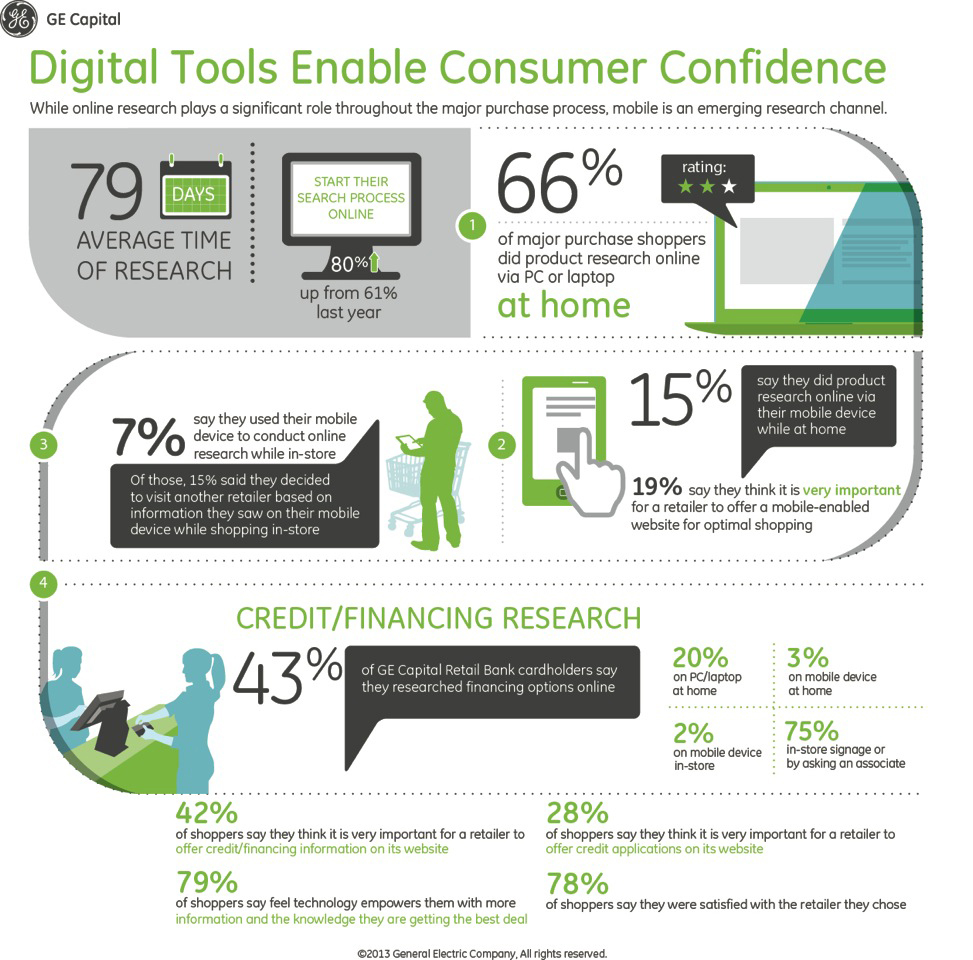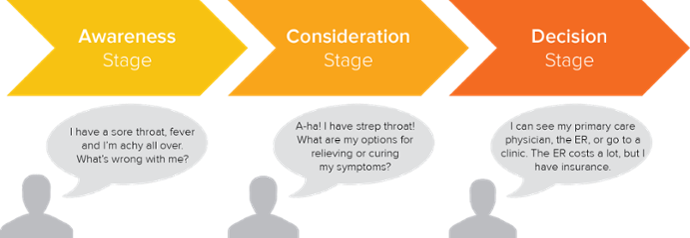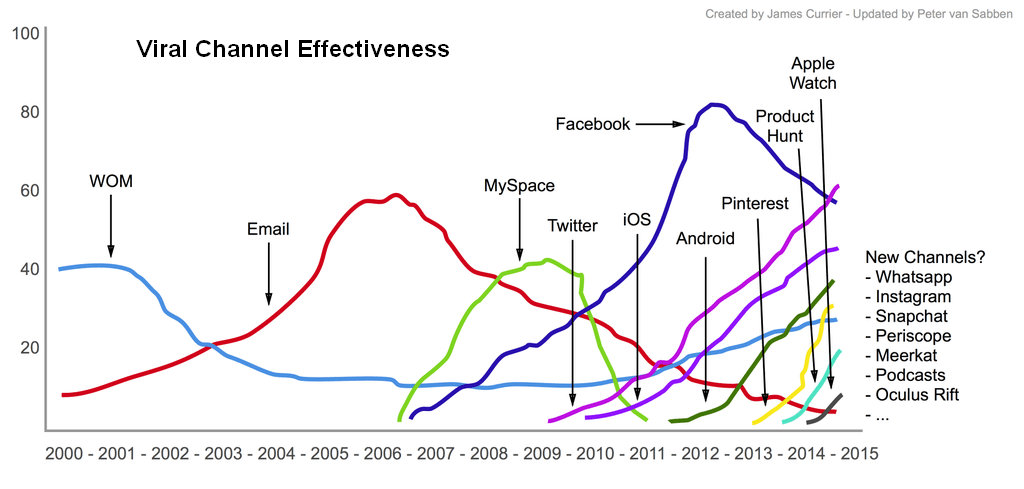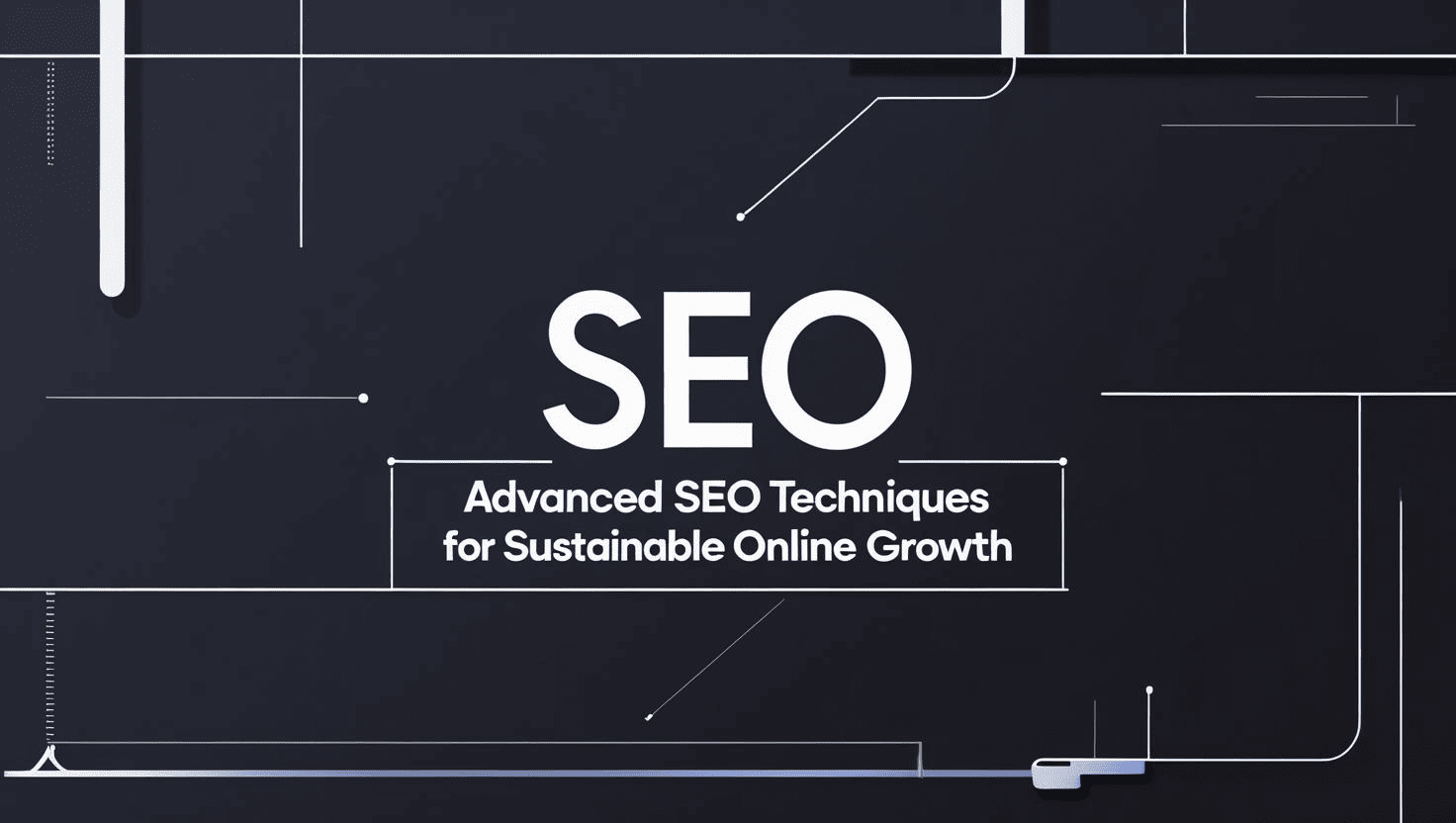
In this post we’ll look at the importance of Inbound Marketing in promoting a company’s product / service (called “product” for the rest of this blog post):
Table of Contents
- What is Inbound Marketing?
- What is the Buyers Journey?
- How should a company implement Inbound Marketing
- What makes Inbound Marketing so useful?
- Customer Case Study
- Free Inbound Marketing Plan Template
So let’s get going:
What is Inbound Marketing?
Let’s start with the definition from Hubspot, the company who coined the term Inbound Marketing:
“Inbound marketing is focused on attracting customers through relevant and helpful content and adding value at every stage in your customer’s buying journey. With inbound marketing, potential customers find you through channels like blogs, search engines, and social media.”
– Hubspot
According to a annual study by GE Capital Retail Bank, 80% of the buyers do their research online before making big purchases.

80%! So you want to have information on the places that customers are now informing themselves, so that they understand what is the value that you provide and how will it help them solve their existing pains.
Think about the last time you made a purchase that had some emotional attachment, let’s say a car. You might have asked your friends for opinions. There might be a specific model on the street that grabbed your attention and go to that dealership to know more information. Mostly likely you will do a lot of online research to get your facts and reviews.
With the wide spread availability of information and searching mechanisms, now being as ubiquitous as a cell phone, consumer habits have changed, and the power scale in a sales process has moved from the seller to the buyer. The buyer now has way more information when moving to the purchase decision, than the seller has. To shed some light on the consumers’ new buying habits, let’s see a research conducted by Google.
Zero moment of Truth
“Whether we’re shopping for corn flakes, concert tickets or a honeymoon in Paris, the Internet has changed how we decide what to buy. At Google, we call this online decision-making moment the Zero Moment of Truth, or simply, ZMOT. The ZMOT refers to the moment in the buying process when the consumer researches a product prior to purchase.”
– Zero Moment of Truth (ZMOT)
Inbound Marketing originated as the perfect answer to the new consumer behaviour that revolves around online search and gathering of information, alternatives and reviews, catering to this ZMOT behaviour.
“Unlike outbound marketing, inbound marketing does not need to fight for potential customers’ attention. By creating content designed to address the problems and needs of your ideal customers, you attract qualified prospects and build trust and credibility for your business.”
– Hubspot
What is the Buyers Journey?
Inbound marketing maps out a buyer’s journey, that fits nicely into the ZMOT. While consumers are doing their research, they will go through his buyer journey, that starts with the Awareness stage, then goes through the Consideration stage, and ends with the Decision stage.

Awareness stage
In this stage, the buyer starts showing symptoms of a specific pain. They are starting their online research, although they still don’t know the specific definition for their pain, nor the solution.
This is the stage where buyers become familiar with the pain in question and know about the various solutions that will help them solve the problem.
Consideration stage
This is the stage where the buyer knows how to define the problem well and where the buyer wants to know more about the solutions: the pros and cons of each approach available. In this stage he will understand for whom is each solution dedicated, and he’ll also search for alternatives.
Decision stage
This is the stage where the buyer is comparing solutions to decide the one that serves him best. In this stage, the buyer will start comparing vendors, to compare offerings and prices, and finally decide for the solution that best fits him.
How should a company implement Inbound Marketing?
We see Inbound Marketing as the perfect way to perfect the AARRR funnel. It will allow you to optimize the funnel all the way to Revenue.
Inbound Marketing needs your commitment for the long-term. The right mindset to approach Inbound Marketing is that it is a long-term effort.
For short-term results, paid marketing efforts will gain way more visibility in a shorter amount of time. Nonetheless, paid marketing (e.g. PPC) will demand up-front investment and is more sensitive to bottlenecks in the conversion funnel.
Therefore, we believe that paid marketing should only initiate after the buyers journey is streamlined. In the beginning you have to pay attention to individual cases as they happen, making them progress along the funnel.
If you jump too soon into online paid marketing, you’ll will be paying for clicks and page views that will find a website that does not convert well, resulting in wasted budget.

After you have defined all steps of the journey, it is time to open the flood gates and increase volume, investing in paid advertising to feed the top of the AARRR funnel.
If you ever were wondering why most up-to-date startups and companies have a business blog, now you know why. It’s all about that sweet inbound marketing, to attract and educate visitors.
What makes Inbound Marketing so useful?
Here are my thoughts about the value of Inbound Marketing, after using it for several years now:
- Scalable methodology: the core of Inbound Marketing is Content Marketing, which is something that once it is done and published, all the content will add up, slowly compounding the number of visitors, with little need to maintain what you have created previously
- Generate leads based on their search intent. Your content attracts the warmer leads, those that will convert more easily;
- Demonstrate authority and expertise on the subject maters that you approach. With Inbound Marketing you have to first prove that you are able to address and inform customers about their needs, showing them that you are an expert on the field.
Customer Case Study
Inbound marketing works great for B2C, as well as B2B.
Salesforce did a B2B inbound marketing experiment, mixing inbound marketing along with social advertising and retargeting, to grow both their traffic and leads in the UK market.
The Results
Salesforce’s project was launched officially on January 3rd, 2012. Here is an example of the feedback Salesforce got from their readers:

Salesforce’s readers tweet about Inbound Marketing
So what was the improvement on Salesforce’s business metrics?
- Traffic for January was up 80% YoY;
- Traffic from social sites was up 2500%;
- Over 6500 people signed up to the newsletter
- Salesforce eBook has been downloaded over 10,000 times (generating 10,000 leads).
And let us not forget that Salesforce is a B2B company!
My personal experience in previous companies has also demonstrated to me the power of compounding inbound efforts. After 6 months, with the amount of traffic increasing, the scalable lead generation machine starts to show its magic.
The companies where I have implemented Inbound Marketing have also experienced the increase in brand awareness that inbound marketing creates. We where no strangers when attending conferences.
If you followed the explanation all the way, it means that you are willing to give Inbound Marketing a try. So here is my Inbound Marketing Plan, for you to download, and to get you quick-started on this amazing marketing framework.
Inbound Marketing Plan Template
Here is the template I use to create a comprehensive Inbound Marketing Plan, from start to finish, from strategy to execution. Here are the details of each section:
Premium Offer: Get our Comprehensive “Inbound Marketing Plan” Template.
Fast-track your Inbound Marketing strategy with our meticulously designed, premium tool.
Visit our homepage to explore more about this indispensable asset!
Chapter 1
Market and Market trends – market definition, market trends, market segmentation
The Inbound Marketing Plan starts with a top-down approach, where you define your market, what forces are making your market evolve and what segments exists and which will you target.
Chapter 2
Ideal Customer Challenges
Afterwards, you define your ideal customer for your company’s product.
Chapter 3
Company’s Product
Now with the ideal customer challenges in mind, what will be the ideal product to solve their pains? Your product of course. So describe it in detail in this chapter.
Chapter 4
Competitor Analysis
Now with a well-defined product, it is time to establish what will be your competition. Every idea has competition already in the market. If that competition does not come from direct competition, it will come in the form of substitute products.
Other questions to answer in this chapter is: how are your ideal customers currently addressing their pains? Why is it not the best solution?
Chapter 5
Points of Parity (POP)
Now that we know all the facts about your offering and we have defined the space where we will be competing, its time to understand what are the Points of Parity you share with the competition.
What you makes you another solution to consider in the space you defined? While Points of Parity are not the reason to make a consumer choose your brand over the competition, their absence is certainly a reason to drop it.
Chapter 6
Points of Difference (POD)
After establishing yourself as another solution for a well-defined problem, with a well-defined market, it’s time to differentiate yourself from the pack. What makes your offering unique?
Chapter 7
Positioning Statement
Why is your solution better than what is currently available in the market? How do you position yourself in the market, taking in consideration the competition?
Chapter 8
Unique Selling Proposition
What is your Unique Selling Proposition? What is your offer specialization? What are you offering that is unique to you?
Chapter 9
State Company’s one-year Marketing Objectives
Now after the external environment is defined and analysed, it is time to draft a one-year Inbound Marketing plan to be executed. After one year, it’s time to analyse the result gathered and revisit this planning exercise.
I have established a one-year marketing plan, since after one year a lot of new channels will surely have emerged and some of the existing ones will have disappeared. Change will also happen with your competitors, buyers habits, etc. So one year is a good time frame to plan, execute, and then iterate.
Example of rapid change in the marketing landscape:

Viral Channel Effectiveness
Now let’s drill down a bit, add more detail into our buyer personas, and start moving into actionable tactics to reach the one-year goals.
Chapter 10
Create buyer personas
Start from your ideal customer and create 3 buyer personas, and add as much detail has you can. Add demographic detail, job role, typical job, daily challenges and tasks. I’ve provided some examples in the Inbound Marketing Plan template.
Chapter 11
Define buyer journey stages
In this chapter, we will understand what is the focus of buyer’s research, in each step of the buyer’s journey, as they go from discovering solution, to analyse them, to comparing them, before deciding which one is the best.
Chapter 12
Conduct keyword research
Now that you clearly visualize your buyer personas, and see through their eyes, it is time to research how would they search online to find answers for their pains. What would be the path they would take to understand that your product exists, that it answer a specific pain point your buyer’s have, and that it provides significant value to them.
This section creates a matrix by crossing buyer personas across the buyer’s journey, to have keywords that will lead into content, for every step of the way.
Chapter 13
Create a content calendar, crossing keywords, personas and buyer stages.
This next section will define a table that defines the content calendar, the foundations of your Inbound Marketing Plan, by planning out content that captures the research intent that our buyer personas have, in every step of the buyers journey, and does its best to educate them through educational free content.
In every blog post, you will think about a particular piece of content that will provide additional value, and is offered as a content upgrade.
Chapter 14
Define content upgrades
So if you only provide “un-gated” content on the blog, but never ask for people’s contacts, you won’t be able to establish a relationship with your leads, understand better who your most engaged readers are, and who would be most interested in your product.
Content upgrades are the best way to collect your readers’ contact, by showing that you can provide more value than you can obtain from the free content. People that support your work, trust and value your content, will gladly provide their contact to be kept in the loop.
Content Upgrades can range from a simple excel sheet, all the way to an ebook that gathers all your expertise about a specific topic in s single resource, showcasing your thought leadership.
This is your inbound lead generation mechanism full at work!
Chapter 15
Define content promotions plan
This is where social media really shines. You have content that you are proud of and want to grab as much attention as you can to your information. Social media is the go-to-place, where you should share your news.
Make sure that you add hashtags for discoverability, and don’t worry about re-posting. Your reader will have different reading habits, and those who read their news feed at night, will not see your morning update…
Additionally think about LinkedIn groups, syndication websites and other online mediums where your audience is likely to be found, so you can leverage your digital marketing, and make the most out of your content.
Chapter 16
Define a lead scoring formula
So how do you know which of your newly created leads is the best one to start a conversation with, and understand how can you provide additional value to him?
The answer is a lead scoring formula. With a Lead Scoring mechanism, you start attributing scores to the actions your readers perform on your site, such as, visit the pricing page, read blogs posts for over a month, subscribe to your newsletter, follow your social media, download your content upgrades and ebooks, etc.
While defining your lead scoring formula, be sure to consider in what stage did your lead show interest, and keep providing answers along that path, moving the lead further along the funnel.
Chapter 17
Create lead nurturing emails
One of Inbound Marketing claims is that it is a scalable Marketing framework. It is automations such as lead nurturing emails that are the reason to believe for such claims.
By setting in place automated lead nurturing emails you can continue to move your newly acquired leads further in the buyers journey funnel, catering for those that want to know more about your product and who are ready to move to a paying customer.
I will provide further detail into how to create a successful nurturing email campaign in an upcoming blog post. The goal is to understand what are your new lead’s motivations, what are their current pain points and how can you add value to them.
Chapter 18
Measure everything with Google Analytics
All the Inbound Marketing execution has to be tracked with Analytics. Your buyers journey will map nicely with the AARRR funnel, ie, startup pirate metrics.
- The Acquisition stage will map your visitors;
- The Activation stage will map your new leads, and if you are marketing a freemium product, it should represent your new users also;
- The Retention stage will map your returning leads / users;
- The Revenue stage will map your paying customers;
- The Referral stage will map your word-of-mouth.
It is vital to measure every stage, to continuously improve your marketing efforts.
Chapter 19
Hacking the growth metrics.
Speaking of continuous improvement, what better way to do it, than to use a tried and tested framework, by which most current hyper-growth startups swear by?
Now that you have mapped your Inbound Marketing into AARRR metrics, it is trivial to optimize each stage with the Growth Hacking mindset. This ensures that you keep improving those statistics, finding pockets of growth through experimentation and high tempo testing.
Conclusion
And this concludes my template for a well-rounded Inbound Marketing plan and I hope it helps you in getting started. The one-year window I have established will allow you to incorporate new lessons learned after some extensive experimentation, to make each new plan more effective than the previous one.
As you keep iterating your Inbound Marketing, you will fine-tune all the moving parts in your Marketing machine, and it will also force you to go deep into the Marketing fundamentals of your company and product.
Inbound marketing starts by leveraging SEO and placing the proper CTAs in place. With this, you will be continuously fine tuning your online lead-generation assets. At one point, you will be ready to complement your Inbound Marketing with Paid Marketing.
And that is the topic of yet another blog post.
Premium Offer: Get our Comprehensive “Inbound Marketing Plan” Template.
Fast-track your Inbound Marketing strategy with our meticulously designed, premium tool.
Visit our homepage to explore more about this indispensable asset!
Share now :


